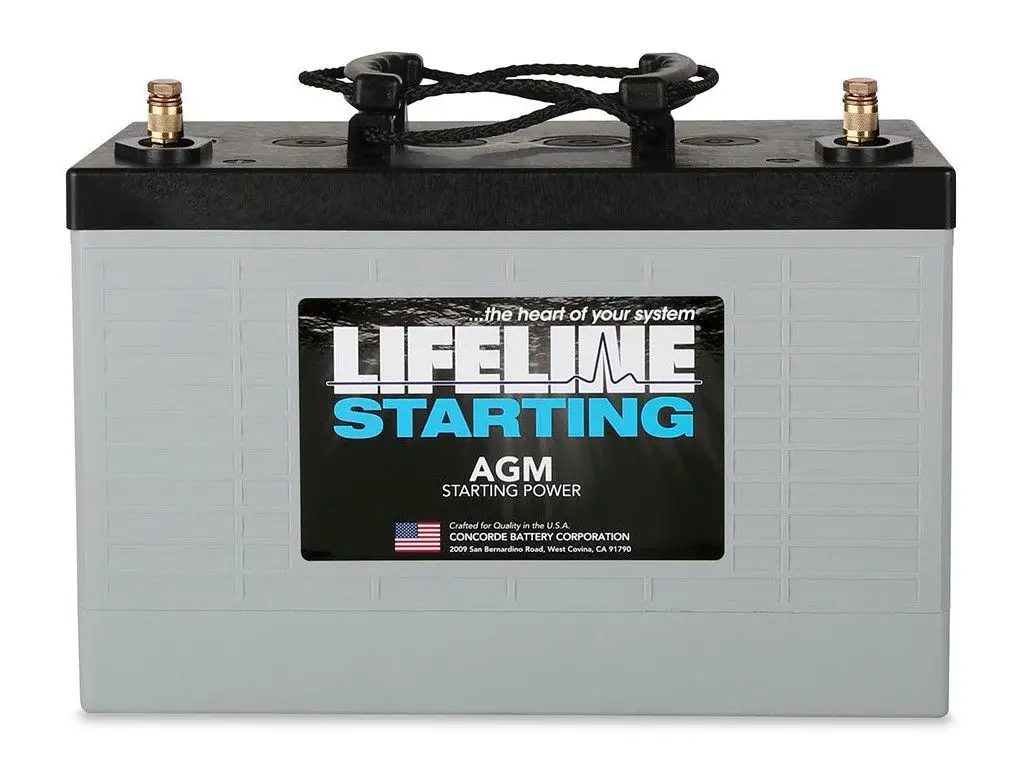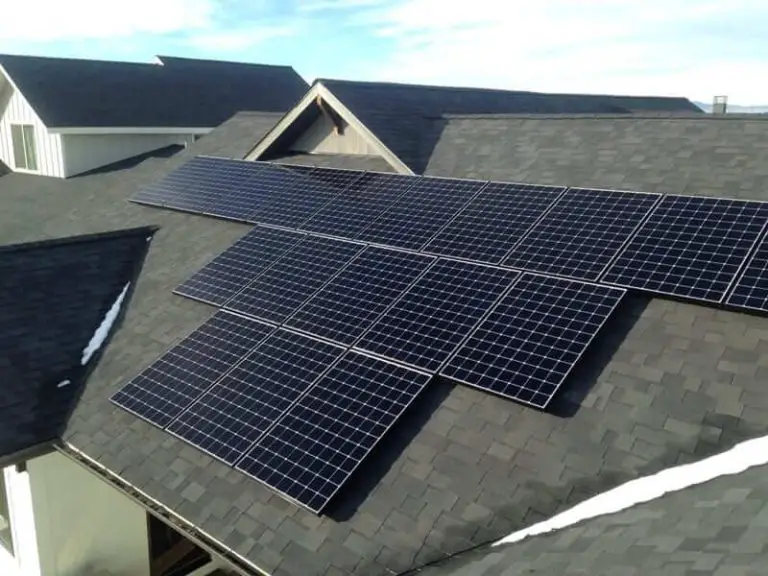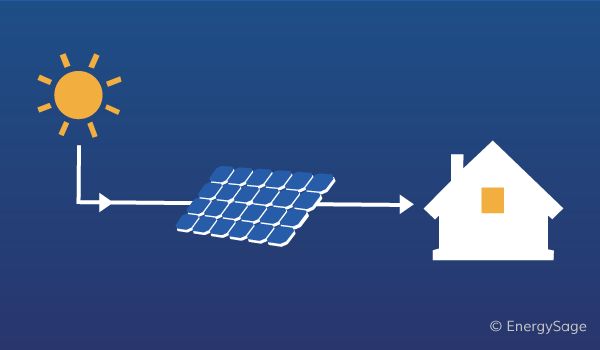What Is The Best Battery For Solar Power?
Introduction

Solar power is the conversion of energy from sunlight into electricity through solar photovoltaic (PV) panels installed on homes or businesses. As energy prices have risen, solar power has become an increasingly attractive option for many homeowners due to potential cost savings as well as environmental benefits. According to studies, the residential solar adoption rate in the U.S. has grown significantly in recent years, reaching approximately 4% of homes as of 2022.
For a home solar system to function properly and provide maximum benefit, an appropriately sized battery is critical for optimizing solar energy storage and usage. Batteries allow solar power generated during daylight hours to be stored and utilized at night or during grid outages. Selecting the right battery technology and capacity is therefore an important consideration when installing a home solar PV system.
This article provides homeowners with a comprehensive overview of the best battery options for residential solar energy systems. It covers key factors in choosing a solar battery, top products from leading brands, emerging technologies, and considerations for different home solar setups. The goal is to help homeowners make informed decisions when investing in batteries to store solar power and maximize their home’s renewable energy system.
Types of Solar Batteries
There are three main types of batteries used for solar energy storage: lithium-ion, lead-acid, and flow batteries. Each has its own advantages and disadvantages when it comes to capacity, lifespan, cost, and performance.
Lithium-Ion Batteries: Li-ion batteries have become the dominant technology for home solar storage thanks to their high energy density, low self-discharge, high round-trip efficiency, and long lifespan. They can retain up to 95% of their capacity after 10 years if cycled daily. However, Li-ion batteries have high upfront costs.
Lead-Acid Batteries: Lead-acid batteries are the most mature and widely adopted battery chemistry. They have lower upfront costs but shorter lifespans of 3-5 years. They can retain 60-80% of rated capacity and suffer capacity loss from self-discharge. Lead-acid offers low energy density and are very heavy.
Flow Batteries: Flow battery systems have high scalability and long lifespans of 15-20 years, but currently have very high costs. They offer complete discharge without harm and can retain 70-80% capacity over lifetime. Vanadium redox flow batteries are the most common type.
When considering solar batteries, factors like battery capacity, depth of discharge, temperature ratings, durability, and maintenance requirements should also be evaluated along with upfront cost. Ultimately the battery choice depends on the solar system size, location, budget and expected usable lifetime.
Matching Solar Panel and Battery Size
Properly matching the solar panel and battery size is crucial for an efficient and cost-effective solar power system. The battery capacity needs to be large enough to store surplus solar energy during the day to power your home at night and during cloudy weather. However, oversizing the battery bank substantially increases costs without providing much added benefit.
As a rule of thumb, the battery capacity should be 20-50% of the solar array’s peak watt output for off-grid systems. For a 5kW solar array, a 1kWh to 2.5kWh battery capacity is typically recommended. Grid-tied systems with net metering can get away with less battery storage since excess generation is sent to the grid. Lithium-ion batteries provide the best combination of high energy density and long cycle life.
To calculate the ideal battery size, assess the average household power consumption, the hours of solar availability in your location, and the solar panel system size. Online battery sizing calculators can provide an estimate based on these inputs. It’s also wise to account for future energy needs when sizing the battery bank to allow for capacity degradation over time.
Undersizing the batteries risks running out of power on cloudy stretches while oversized batteries drive up system costs and take up space. Carefully matching the solar array output to battery capacity ensures reliable off-grid operation without wasting money.
Installation and Maintenance
Installing a solar battery system requires careful planning and permitting. Many areas require a building permit before installation can begin. The size of the solar and battery system will determine the specifics of the permitting process. Always check local regulations and work with qualified solar installers to ensure proper permitting.
Properly wiring the solar panels, inverter, battery bank, and electrical panel is crucial for safety and performance. Batteries require thick wires capable of handling high amperages. Connections must be tight and corrosion-resistant. It’s recommended to have a licensed electrician handle the wiring according to electrical codes.
Solar batteries require regular maintenance to ensure long life. Flooded lead-acid batteries need to have distilled water added periodically to maintain electrolyte levels. Battery terminals should be cleaned and tightened as needed. Some batteries may require equalization charges to balance cells. Check manufacturer guidelines for maintenance schedules.
Installation and wiring of a solar battery bank can range from $2,000 to $10,000 depending on system size. Batteries also add maintenance costs over time. Proper installation is crucial for safety – batteries contain hazardous materials and can pose electrocution risks if wired improperly. Always take precautions and have qualified technicians handle any battery work.
Sources:
https://www.paradisesolarenergy.com/blog/ultimate-guide-to-solar-batteries
Top Solar Battery Brands
When choosing a battery for your solar power system, the brand and model are important factors to consider. Some of the top solar battery brands based on reputation, performance, and popularity are:
Tesla Powerwall
The Tesla Powerwall is one of the most well-known solar batteries. The lithium ion battery offers 13.5 kWh of storage capacity and has a 10 year warranty [1]. It has integrated power electronics and thermal management for optimal performance. Many reviewers praise the sleek design and integrated software platform.
LG Chem
LG offers several residential battery options ranging from 9.8 kWh to 19.2 kWh capacities [2]. Their batteries feature lithium-ion NMC cell technology and a 10 year warranty. LG batteries are known for consistent quality and performance.
Sonnen
Sonnen provides the Eco Compact and Eco Industrie battery models ranging from 5 kWh to 20 kWh storage [3]. Their lithium iron phosphate batteries are built for reliability and integrate with smart energy management. Sonnen has a strong reputation in Europe and Australia.
Generac PWRcell
Generac offers the PWRcell battery system from 8.6 kWh to 16.2 kWh capacities [4]. It uses lithium iron phosphate chemistry and has an integrated inverter. Generac is known for its backup power systems, and the PWRcell leverages this expertise.
Battery Management Systems
A battery management system (BMS) is an essential component of any solar power system that uses batteries. The purpose of a BMS is to monitor and manage the battery system to optimize performance, extend lifespan, and ensure safe operation (Source).
Some key features and benefits of a solar BMS include:
- Monitoring battery voltage, current, temperature, and other parameters in real-time to prevent overcharging or overdischarging (Source)
- Balancing the charge of each cell in the battery bank to prevent under or overcharging individual cells
- Protecting against short circuits, overcurrent, high temperature, and other hazardous conditions
- Optimizing battery charging and discharging to extend cycle life
- Providing diagnostics and warnings to identify potential faults or service needs
- Allowing remote monitoring and control via smartphone apps or web interfaces
By carefully managing vital battery parameters and protecting against abuse, a quality BMS enables solar batteries to operate safely, efficiently and reach their expected lifespan.
Battery Storage Incentives
There are several tax credits, rebates and incentives available for adding solar battery storage in the United States. The main federal incentive is the investment tax credit (ITC), which provides a tax credit equal to 26% of the cost of installing a solar energy system in 2020-2022. This increases to 30% in 2023. To qualify for the ITC, the batteries must be charged at least 75% by the solar system (IRS).
Many states also offer additional incentives for solar battery storage:
- California’s Self-Generation Incentive Program (SGIP) provides rebates up to $400/kWh for adding energy storage to existing solar PV systems. There is also the Self-Generation Credit for customers of the state’s three investor-owned utilities (Energysage).
- Massachusetts offers an energy storage rebate up to $250/kWh for systems paired with solar through the Massachusetts SMART program (DSIRE).
- New York provides a 25% state tax credit up to $5,000 for solar-paired energy storage systems through the NY-Sun program (DSIRE).
- Maryland offers a 30% rebate up to $5,000 per system through the Energy Storage Tax Credit Assistance Program (DSIRE).
There are also some utility and municipality programs. For example, Salt River Project in Arizona provides rebates up to $1,200 per kWh for adding storage to rooftop solar (Energysage).
Future Battery Technology
There are exciting developments in solar battery technology emerging that will further improve the performance and viability of solar energy systems. As mentioned in this article, promising new battery chemistries include lithium sulfur and zinc-air batteries. These can provide higher energy density than lithium ion at a lower cost. Flow batteries that use liquid electrolytes are also gaining traction for their flexible scalability.
In general, research is focused on improving battery lifespan, efficiency, safety, and costs. Using advanced materials like graphene in electrodes and solid state electrolytes can increase performance. Battery management systems are also becoming more intelligent to optimize charging and discharging. Even further in the future, new technologies like lithium-air batteries have the potential to dramatically increase energy density.
As costs continue to fall and lifetimes increase from 5-10 years up to 15-20 years, solar batteries will become increasingly economically viable. Emerging chemistries, materials and battery management will drive an exciting new wave of innovation in energy storage.
Off-Grid vs Grid-Tied
When deciding between off-grid and grid-tied solar systems, it’s important to compare the pros and cons of each option.
Off-grid solar systems operate independently from the utility grid and rely on batteries to store excess solar energy for use when solar panels are not actively producing power. According to Unbound Solar, off-grid systems provide complete energy independence and can function during utility power outages[1]. However, off-grid systems require larger solar arrays and battery banks to meet all energy needs, leading to higher upfront costs. Maintenance is also crucial for off-grid systems to monitor battery health and performance.
Grid-tied solar systems remain connected to the utility grid. During times when solar panels produce excess energy, the surplus is fed back into the grid. Grid-tied systems can utilize net metering programs and sell extra electricity to utility companies at retail rates. Without large battery banks, grid-tied systems have lower upfront installation costs than off-grid. However, grid-tied systems do not provide backup power during utility outages without an additional battery system.
For most residential applications, grid-tied solar with battery backup offers the best of both worlds. During a power outage, the battery system can provide essential loads while excess solar can still be fed to the grid. According to Solar Electric Inc, hybrid grid-tied with battery backup systems provide energy independence along with net metering incentives[2].
Conclusion
When selecting a battery for your solar power system, it is important to carefully consider the type of battery, its size and capacity, installation and maintenance requirements, and overall cost. Lithium-ion batteries offer high efficiency and longer lifespans but can be more expensive upfront. Lead-acid batteries are more affordable but require more maintenance.
Properly sizing your solar battery capacity to your solar panel system is crucial to maximize solar self-consumption and avoid over/under production. Work with a reputable installer to determine the right battery size based on your energy usage needs. Ongoing battery maintenance and management will also help extend battery life.
Installing a high-quality solar battery from a leading brand, along with an advanced battery management system, gives you the best performance and return on investment. Be sure to explore any available federal, state or utility incentives that can help offset the cost of adding solar batteries.
As solar and battery technology continues to advance, energy storage will become more efficient and affordable. With the right solar battery in place, you can maximize your solar energy production and use.





